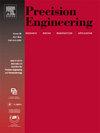Quality enhancement of interferometric fringe pattern based on deep-learning-based denoising of combined noise
IF 3.5
2区 工程技术
Q2 ENGINEERING, MANUFACTURING
Precision Engineering-Journal of the International Societies for Precision Engineering and Nanotechnology
Pub Date : 2025-04-16
DOI:10.1016/j.precisioneng.2025.04.021
引用次数: 0
Abstract
Optical interferometry is a highly accurate method for measuring the properties of optical components. This method uses fringe patterns obtained using an interferometer to extract the phase based on the properties of the measurement target. Noiseless fringe patterns are ideal for precise measurements. However, owing to unavoidable factors in real-world environments, noise is inevitably introduced into fringe patterns. Therefore, a denoising process is essential for enhancing the phase extraction results. Among the different types of noise, the second-harmonic component has been reported to be the most dominant. In this study, the combination of the second-harmonic component and Gaussian noise is defined as combined noise. In addition, a combined noise decomposition method using deep learning is proposed. Specifically, the denoising residual attention UNet (DRAUNet) model was designed and trained to decompose combined noise from fringe patterns. The model can uniformly increase the contrast of noisy fringe patterns. The proposed method was validated using simulation data, confirming its superior denoising performance compared with those of other methods. Furthermore, the necessity of considering the second-harmonic component in the denoising process was verified. Finally, the effectiveness and superiority of the developed method were further validated using real fringe patterns from the surface shape measurements of a silicon wafer obtained using a Fizeau interferometer.
基于深度学习组合噪声去噪的干涉条纹图质量增强
光学干涉测量是一种高精度测量光学元件特性的方法。该方法利用干涉仪获得的条纹图,根据测量目标的特性提取相位。无噪声条纹图案是精确测量的理想选择。然而,由于现实环境中不可避免的因素,噪声不可避免地引入到条纹图中。因此,为了提高相位提取的效果,必须进行去噪处理。在不同类型的噪声中,二次谐波分量是最主要的。在本研究中,将二次谐波分量与高斯噪声的组合定义为组合噪声。此外,提出了一种基于深度学习的组合噪声分解方法。具体来说,设计并训练了去噪剩余注意UNet (DRAUNet)模型来分解条纹图案的组合噪声。该模型能均匀地提高噪声条纹的对比度。仿真数据验证了该方法的有效性,与其他方法相比,该方法具有更好的去噪性能。进一步验证了在去噪过程中考虑二次谐波分量的必要性。最后,利用菲索干涉仪测量硅片表面形状的真实条纹图进一步验证了该方法的有效性和优越性。
本文章由计算机程序翻译,如有差异,请以英文原文为准。
求助全文
约1分钟内获得全文
求助全文
来源期刊
CiteScore
7.40
自引率
5.60%
发文量
177
审稿时长
46 days
期刊介绍:
Precision Engineering - Journal of the International Societies for Precision Engineering and Nanotechnology is devoted to the multidisciplinary study and practice of high accuracy engineering, metrology, and manufacturing. The journal takes an integrated approach to all subjects related to research, design, manufacture, performance validation, and application of high precision machines, instruments, and components, including fundamental and applied research and development in manufacturing processes, fabrication technology, and advanced measurement science. The scope includes precision-engineered systems and supporting metrology over the full range of length scales, from atom-based nanotechnology and advanced lithographic technology to large-scale systems, including optical and radio telescopes and macrometrology.

 求助内容:
求助内容: 应助结果提醒方式:
应助结果提醒方式:


